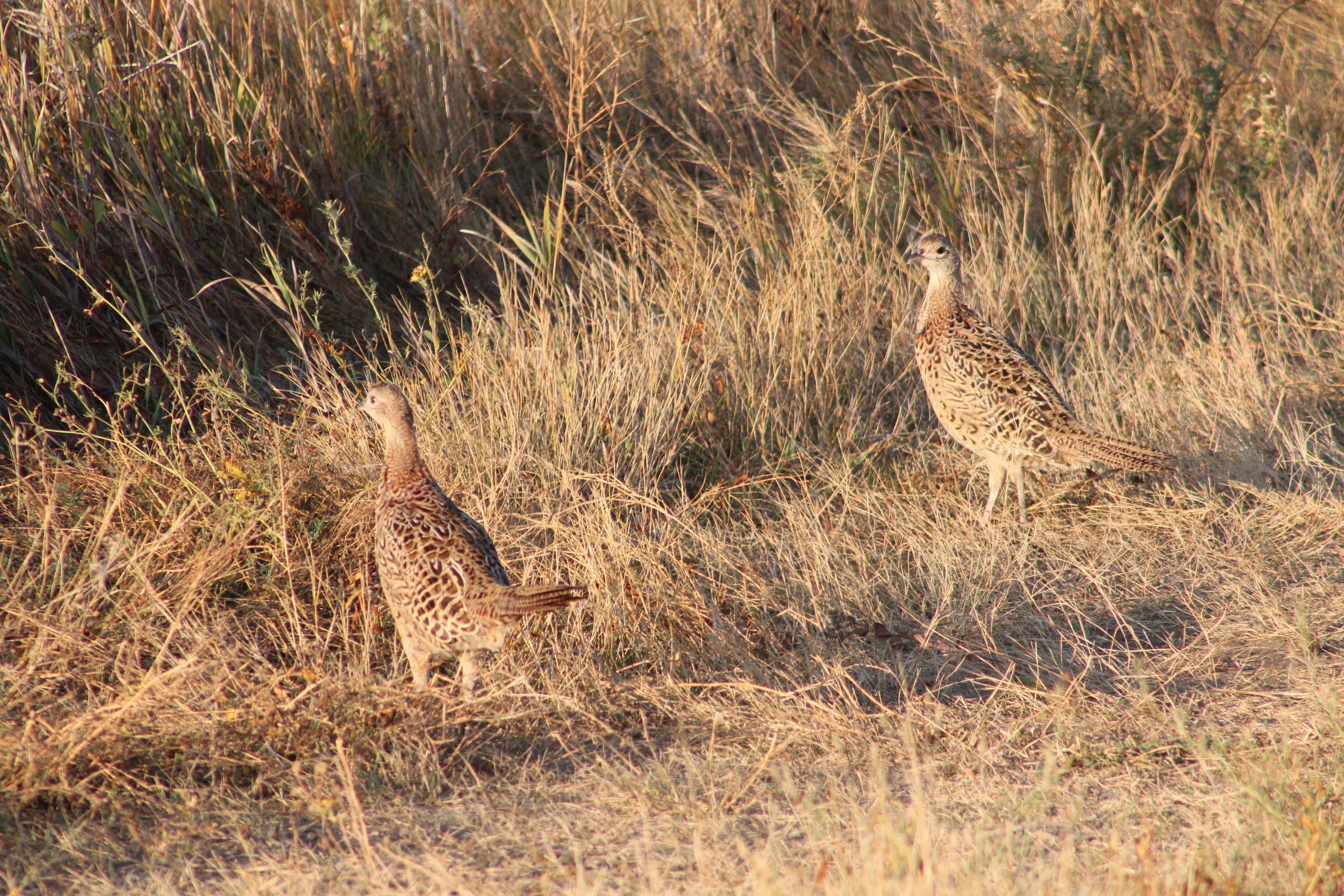
Hen pheasants carried out a successful nesting season which saw a 38 percent increase in populations, thanks in part to good habitat on the ground. ND PF looks to continue that trend with exciting new projects underway. Simonson Photo
By Nick Simonson
Despite the pandemic-related headwinds which hindered fundraising efforts and banquet activities for Pheasants Forever (PF) chapters across North Dakota this spring, State Coordinator Rachel Bush sees a lot of great developments for the organization in the region, and is eyeing up a successful return to the field buoyed by better bird numbers and some habitat-producing projects.
“Our chapters have continued to do great things and put habitat on the ground, so we’re always appreciative of the work they do; as far as us, being staff members, we’re continuing to deliver habitat acres through our precision ag initiative,” Bush relates of the organization’s work, “despite the hurdles that Covid has placed on us, we’re still managing to get out there and do some outreach events, some education and R3 events, keeping social distancing in mind,” she added, noting that PF had to adjust many efforts to connect with its members and the general public over the past six months.
At the top of those efforts was North Dakota PF’s focus on improved habitat through modified grazing practices, particularly in the southwestern portion of the state. There the organization provided cost-share funding and guidance for ranchers looking to protect vital areas of habitat, including those along riparian areas and marginal spaces, while allowing their livestock sufficient food sources. Through modifications protecting those places, operators could avail themselves of funds to offset the expenses of new fencing, water delivery systems and other changes to their grazing practices which benefitted water quality, soil health and wildlife.
The organization has applied for a grant through the North Dakota Outdoor Heritage Fund to continue the efforts in 2021.
“With the Outdoor Heritage Fund, there was a recent grant round, and at PF we submitted two grants: one is going to be a phase two of our popular southwest grazing lands improvement,” Bush reveals ahead of a hearing at the end of the month to approve that request along with a second application; “a new one we submitted is a community pollinator project which is really designed to work with our local chapters, engage community members, educate them about the importance of pollinators and how pollinator habitat equates to high-quality pheasant habitat,” she concluded.
In partnership with Purina, the organization has undertaken a multi-state effort throughout the upper Midwest including a good portion of North Dakota to help farmers utilize precision agricultural programs to maximize the productivity of their land and set aside marginal acres unsuitable for farming which waste inputs such as seed and spray, and convert those areas to wildlife habitat with set-aside income available through state and federal programs.
The Soil Health and Habitat Program targets farmers who have some experience analyzing their lands with precision agriculture software, and already is utilizing that data for fall plantings to benefit wildlife next spring.
In addition to those efforts, Bush reveals that a number of factors beyond the weather have helped put more habitat on the ground to increase pheasant numbers for hunters in the fall of 2020.
“Since last pheasant season we’ve had a CRP sign up and contracts get signed, so we probably saw some new habitat go in the ground,” she advises, adding, “looking at nesting habitat, overall we had a pretty good nesting season for pheasants here across the state.”
This season, overall pheasant counts in North Dakota were up 38 percent when compared to 2019, and brood numbers increased by 30 percent over last year. Additionally, brood sizes were up ten percent, suggesting better nesting and recruitment throughout the spring and summer.
“There’s a lot of excitement about the upcoming season,” Bush suggests from her discussions with PF members around the state, concluding, “our bird numbers are up and I think just with the year that we’ve had, people are really excited to get outside and get ready for pheasant season.”
More information on habitat programs offered by PF can be found at pheasantsforever.org.
